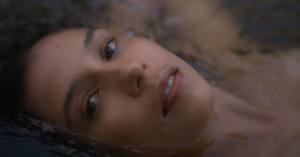7 July 2023
Senior Colourist Angela Cerasi explains the differences between grading commercials vs. longform work in this blog
Grading commercials is a different beast altogether to drama and documentary. You only have a short amount of time – usually 30 to 60 seconds – to get the point across. Superfluous elements which don’t move the story forward or get the point across are discarded. In post production, this may mean getting rid of getting rid of distractions in the background – literally painting out lamp posts or cloning patchy grass so it looks like a flawless lawn: anything that may take our eye away from the main action and point of the story.
TV commercial post production
The majority of television commercials are aspirational – a motion picture version of a fashion or homewares magazine. This means in order to sell and appeal to consumers, they present the product, service, situation or scene in the most desirable or perfect way. Any imperfections or anything that strays from “norm” are avoided.
For example –in the last shot of a toothpaste ad when you see the close up of a big beautiful smile… you never see crooked teeth or a wonky smile, it’s always perfect.
On the Corona ad with the friends drinking beer on the beach at sunset… you never see seaweed or litter washed up on the beach, it’s always postcard perfect.

An image from the Calypso Mangoes campaign “Calypso Man“
TV commercial grading
How this translates to colour grading is the fact that in a commercial colour grade, we often spend our time perfecting every detail of the image. You might get one day to colour grade 30mins of documentary or drama, and you might get one day to colour grade a 30 second commercial. So obviously commercials are A LOT more detail driven. There is more money and time to finesse each shot, and make it as perfect as possible.
Examples of the detail that might be go into a commercial grade include changing eye colour, skin softening, under eye lightening and blemish removal.
For food commercials, you might dive into every element of the food.. for example making the lettuce leaves feel crisper and fresher, changing the look of the cheese to look less like cheddar and more like mozzarella, making chocolate feel richer, darker and silkier.
For car commercials, you would be making the tred on the tyres look pronounced, enhancing and colouring the type of shine and glint off the metallic paint.
For tourism ads, you might be making water sparkle, changing the appearance of the footprints in the sand.
For beverage ads, you would be playing with the definition of the bubbles in the fizz.

An image from the Bulla Brand campaign “Yoghurt“
More realistic or filmic briefs
There are of course, a range of commercials which are not concerned with making details perfect, but instead portraying a more realistic view. These might be promoting an event or an organisation rather than selling products or services. An example might be a not-for-profit organisation like World Vision or Kids Help Line. Depending on the concept, these might have a different brief which might be more in line with a documentary or a drama. They might want to be more “realistic” in their depiction of what is unfolding on screen, and they probably want to convey an emotion that is more like empathy, instead than desire. They may require more of a “filmic” look – where imperfections are ok.

An image from the Queensland Health campaign “Dear Mind“
Who is providing feedback and signing off on the grade?
The other major way that grading for commercials differs to documentary and drama is because of the number of people invested in seeing the work made. For documentary and drama there’s a director and a producer, or a producing team, a studio, a broadcaster, funding body or distributor. The people who are across the grade or attend and usually have signoff is the director, producer or executive producer (at least in Australia). For a commercial grade, there is the brand or company that is selling the actual product or service – the client – then there is the art director or creative director at the advertising agency who thought up the marketing concept – they are called the creative. Then you have a director at a production company who pitched an idea for a commercial to the ad agency, based on their marketing concept. The production company who actually wins the job will create the commercial and often engage a post production house to complete the edit, sound and grade. The post production house will employ the colourist to fulfil the brief of the director. But of course, there is often a lot of money involved in commercials, and a lot of different people who want to impress the next person up the chain, so often it will be an interesting dynamic of opinions and priorities. Sometimes in a grade review you will have a director, producer, an art director or the creative director, an agency producer and some representatives from the brand for example a marketing manager.
Changing Approval Process
It’s worth noting here that this process can be different, and is becoming increasingly different due to our changing world. For example the client could go directly to the production company, and bypass the ad agency, or the production company could bypass the post production house and do it in-house. Traditionally meetings and sessions all got carried out in person, but that has changed with the increase of technological advancements and remote collaboration. But in general, it’s a completely different mix of people compared to drama and documentary, and it’s a quick turnaround between the shoot, edit, grade and mastering. Decisions and approvals need to be made quickly, and there can be a lot of pressure going on. In the grading session, the agency and client usually speak to the director, and the director talks to the colourist. The colourist needs to be quick, accommodating, flexible, creative and able to work under pressure.

An image from the Dermalogica campaign “Hold The Pose“
You can listen to this on Angela Cerasi’s podcast “The Art of Colour Grading” here.



 Prev
Prev